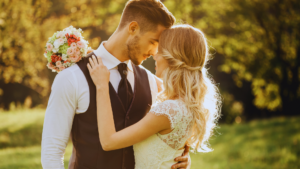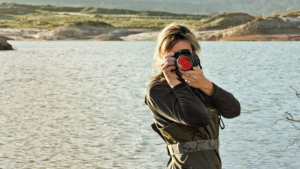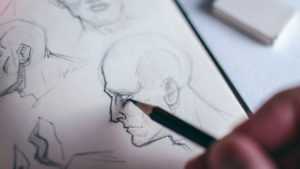
Capturing a sense of movement in photography can transform a static image into a dynamic experience. By using techniques such as slower shutter speeds, panning, and intelligent framing, photographers can convey action and energy in their images. Whether it’s a sport, a bustling street scene, or natural landscapes, the right approach can result in compelling visuals.
Understanding composition plays a critical role in this process. The placement of subjects within the frame can enhance the perception of motion. Techniques like leading lines or the rule of thirds can guide the viewer’s eye and create a narrative that feels alive and engaging.
Experimentation is key to mastering movement in photography. By practicing and adjusting settings, photographers develop an intuitive sense of how to express motion, bringing their creativity to life with every click of the shutter.
Understanding Movement in Photography
Capturing movement in photography involves various techniques to evoke a sense of action. Photographers must grasp the dynamics of motion and the technical skills needed to represent it effectively.
The Basics of Motion Capture
Motion capture starts with the concept of timing and exposure. A photographer can manipulate the shutter speed to either freeze or blur action. For fast movements, a speed of 1/500 or faster can freeze the subject, delivering clarity.
Understanding light conditions is essential. In bright light, faster shutter speeds are more accessible, while low light may necessitate adjustments in aperture and ISO. These changes can affect the quality and feel of the photograph.
Additionally, composition plays a crucial role. Incorporating leading lines or angles can create a visual path that directs the viewer’s attention to the motion.
Dynamic Tension
Dynamic tension refers to the potential energy within a scene that suggests movement. It can be captured by framing subjects in a way that implies action, even in stillness. For example, a dancer caught mid-leap or an athlete winding up for a throw can generate an energetic composition.
Photographers should consider elements such as body posture and positioning. A slight tilt in a subject or the angle of limbs can amplify dynamism. Additionally, the background can enhance this effect; a blurred background adds contrast and emphasizes the subject’s movement.
Using negative space strategically can also highlight the tension and lead the viewer’s eye to the action. This approach guides attention and enriches the overall narrative of the photo.
Freezing vs. Blurring Motion
Choosing between freezing and blurring motion hinges on the story the photographer wants to convey. Freezing motion captures a precise moment, offering clarity. This technique is common in sports photography to highlight a key event, such as a goal being scored.
Conversely, blurring motion emphasizes the speed and flow of the subject’s movement. To create this effect, a slower shutter speed is used. Successful blurring requires the photographer to track the subject’s movement, resulting in a movement path that can evoke excitement.
Both techniques serve different artistic purposes. A photographer may choose to mix these methods in a single image for added depth, juxtaposing stillness with motion to create a dynamic visual experience.
Camera Settings and Techniques
To create a sense of movement in photography, specific camera settings and techniques are essential. Adjusting shutter speed, aperture, and ISO effectively can transform static images into dynamic visual stories.
Shutter Speed Mastery
Shutter speed primarily determines how motion is captured. A fast shutter speed (1/500s or faster) freezes movement, ideal for action shots. Conversely, a slow shutter speed (1/30s or slower) creates blur, suggesting motion.
For instance, using a shutter speed of 1/60s can yield a nice balance for subjects in motion, allowing some blur while still retaining focus.
Tips for shutter speed:
- Use a tripod for slow speeds to avoid shake.
- Experiment with panning: move the camera along with the subject to create a motion effect while the background blurs.
Playing with Aperture
Aperture affects depth of field and can play a role in how movement is perceived. A wide aperture (f/2.8 or lower) isolates the subject, while a narrow aperture (f/8 or higher) keeps more of the scene in focus.
When capturing fast-moving subjects, a wide aperture can help maintain focus. This choice can create a beautiful bokeh effect that emphasizes movement.
Consider these points:
- Wide apertures allow for faster shutter speeds.
- Experiment with different f-stop settings to see how they alter the perception of motion.
ISO Considerations
ISO setting impacts image quality and exposure. In low-light situations, a higher ISO (800 and above) can help achieve proper exposure without sacrificing shutter speed. However, higher ISO values can introduce noise.
For bright conditions, a low ISO (100-200) is preferable to maintain image quality and detail.
Best practices include:
- Start with the lowest ISO for clarity.
- Adjust ISO according to lighting conditions while balancing it with shutter speed to maintain movement clarity.
Utilizing Long Exposures
Long exposure photography is an effective way to capture movement. This technique involves using a slow shutter speed (typically 1 second or longer) to blur motion, such as flowing water or moving cars.
A neutral density (ND) filter can be helpful to prevent overexposure while using long exposures in bright light conditions.
Techniques to try:
- Focus on static subjects: Capture movement in the background for a layered effect.
- Use a remote shutter release to avoid shake during long exposures.
Exploring these techniques will enhance the ability to convey a sense of movement in photographs.
Composition and Perspective
Effective photography capturing movement relies heavily on composition and perspective. Strategic placement of subjects and choice of angles can significantly enhance the sense of dynamism in an image.
Rule of Thirds in Action Shots
The Rule of Thirds is a fundamental composition technique that divides an image into nine equal segments. Placing moving subjects along these lines or at their intersections creates a more engaging and balanced photo.
For action shots, positioning the subject off-center directs the viewer’s gaze along the path of movement. This technique emphasizes the dynamism of the scene. For instance, if a runner is in motion, placing them slightly to the side allows for visual space in the direction they are running.
By utilizing the Rule of Thirds, photographers lead the viewer’s eye naturally through the image, producing a compelling sense of motion.
Leading Lines and Movement
Leading lines guide the viewer’s eye toward the subject and emphasize movement within a photo. These lines can be natural, such as roads or rivers, or man-made, like fences or buildings.
Incorporating leading lines in action shots can enhance the sensation of speed and direction. For example, a cyclist racing along a curved road creates a path that draws viewers’ attention. Utilizing these lines can create a visual flow that mimics the action, providing depth and a clear narrative to the photograph.
Additionally, leading lines can frame the subject, enhancing focus and immersing viewers in the movement.
The Impact of Camera Angles
Camera angles play a crucial role in conveying movement. Low angles can make subjects appear larger, more dynamic, and more powerful, while high angles can provide an overview of the action taking place.
For instance, photographing a skateboarder from ground level captures the height of a jump, emphasizing their motion. Conversely, a bird’s-eye view can reveal patterns of movement, adding context and showing how subjects interact within a space.
Switching angles can also create differing perceptions of speed and effort. An unusual perspective often provokes interest, contributing to a more compelling representation of movement.
Using Foreground and Background
Incorporating foreground and background elements adds depth to images and accentuates movement. By placing objects in the foreground, photographers create a frame that immerses the viewer in the scene.
This technique can suggest speed—blurred background elements contrast with a sharply focused subject, enhancing the feeling of movement. For example, capturing a runner with a blurred crowd in the background intensifies the sense of action.
Conversely, a well-defined background can provide context, helping viewers understand the environment in which the movement takes place. Utilizing these layers enriches the overall composition and amplifies the sense of dynamism.
Post-Processing to Enhance Motion
Effective post-processing techniques can significantly enhance the sense of movement in photographs. The following methods focus on selective blur, adjustments in color and contrast, and strategic cropping for better composition.
Selective Focus and Blur Effects
Selective focus can draw attention to a subject while creating a dynamic background. In software like Adobe Photoshop or Lightroom, one can use the Gaussian Blur tool to apply a gradient blur effect. This mimics depth of field.
- Radial Filter: This tool allows for selective blurring around the subject, providing a stronger sense of motion.
- Motion Blur: Applying a slight linear motion blur to the background can enhance the feeling of speed.
Adjusting the focus point emphasizes the main subject and creates an engaging visual narrative. In addition to software manipulation, ensuring the camera lens itself is protected can be essential to ensure image quality is maintained. Using options like an Insta360 X5 UV Filter, for instance, can ensure that the lenses are shielded from scratches and impacts, while the specialized coating can keep the dust away, guaranteeing the sharpest possible base image for selective focus and blur effects.
Color and Contrast Adjustments
Color and contrast play crucial roles in conveying motion. Bright colors can evoke energy, while darker tones may suggest speed. Enhancing contrast can help subjects pop against a blurred background.
- Vibrance: Increasing vibrance subtly boosts colors without distorting skin tones. This makes the image more lively.
- Curves Adjustment: Fine-tuning the curves can add depth to highlights and shadows, enhancing the perception of movement.
Using color harmonies effectively directs the viewer’s eye and enhances the overall motion feel.
Cropping for Composition
Cropping is vital for creating a focused composition that conveys motion. Removing distracting elements directs attention to the subject and its movement.
- Leading Lines: Crop to emphasize lines that lead toward the subject, enhancing the sense of direction.
- Rule of Thirds: Positioning the subject off-center can create tension and a more dynamic feel.
Strategic cropping not only improves composition but also reinforces the narrative of movement within the image.











